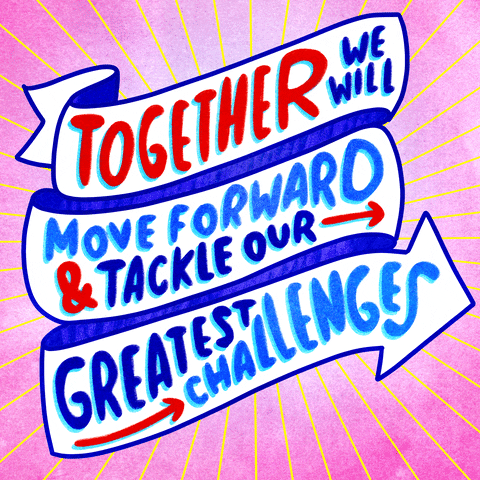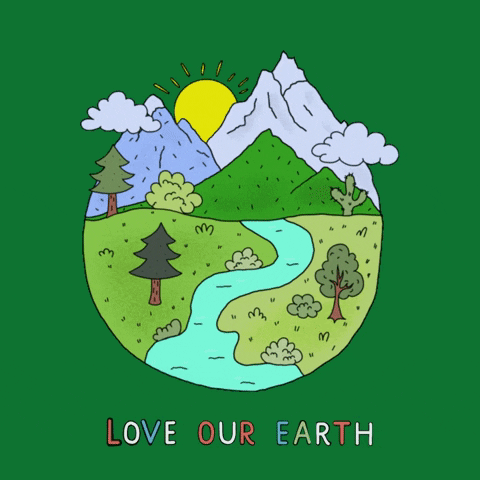Stories
2023 Mantra: Informed. Involved. Inclusive.
Feb 17, 2023 by Irene Chooi and Jo KienBanner Image By : Adrihani Rashid PFP
Have you made a New Year’s resolution for 2023? We’ve made about a dozen so far! There’s something about temporal milestones such as a new year, the start of a month, a birthday, or even the end of a holiday that gives people an extra motivational kick to achieve their goals. Researchers call this the Fresh Start Effect.
However, even with this inspiring boost, people can still feel lost when it comes to pursuing a new goal. Perhaps this is why so many people sign up for gym memberships in the new year. But what if your goal is to become a better friend to the environment? As far as we know, there are no personal trainers for that. That’s why we’ve devised a simple mantra to help you achieve your green goals in 2023: Informed. Involved. Inclusive.
Step One: Informed
Just like how you and your friends might have different hobbies, everybody’s interest in the environment varies. You might be curious about ocean plastic pollution or land subsidence in peatlands, while your friend might wonder how rising temperatures affect animal populations. We are all different!

So step one is to identify which green cause (or causes) you are passionate about. Instead of relying on whatever pops up on your social media feed, be proactive in searching for information online. Stick to reputable news sites and organisations and allow yourself to get curious! Embrace that rabbit hole and dig for those facts. Actions that are solely fueled by emotions might end up hurting the planet in the long run, so be sceptical about hype and trends and trust the facts.
For example, if you’re wondering why peatlands matter, People for Peat’s website and social media platforms are chock-full resources about Southeast Asia’s landscape. Depending on the type of content you prefer to consume, you can access published research, articles, and even videos.
Once you emerge from your information immersion, you should have a pretty good idea about what green cause you want to champion. You might also be feeling some Eco-Anxiety, which is completely normal yet wildly misplaced, as explained by Professor Juliet Schor’s ”Pogo problem” (Read this out loud “It’s not my fault!”). Being a better friend to the environment is a long game and requires mental resilience. It is not sustainable to be fueled by guilt and dread. So while we shouldn’t deny our anxieties, we must see through misinformation and keep pushing for a greener future and the actions we can take to achieve that. So be brave, and read that bad news.
Step Two: Involved
Once you know what you’re passionate about, it’s time to get involved. The best way to learn more about your environmental interest and the impact you can make is to follow an existing organisation or group and actively participate in the conversation and activities. For example, if you want to conserve peatlands, you can follow People for Peat’s social media platforms, download our printable materials, and start a conversation with your community and friends.

Volunteering is also a great way to immerse yourself in your environmental cause. As iron sharpens iron, so one person sharpens another. Never underestimate the power of being surrounded by a supportive community, but at the same time, beware of the Echo Chamber, which we will talk about later.
After you identify a group you’d like to be part of, figure out the role you can play. If you are good with people, perhaps volunteer with the campaigning team. If you are good with words, the communications team might be right for you. There are many ways to get involved and it’s important to act within our capacity instead of comparing ourselves to others. Remember, this is a long game. Any actions you take to conserve the environment should be sustainable on all accounts, especially mentally and physically.
What if you can’t find a group that shares your interests? Start one! For example, if you want to protect the green space in your residential area, start a nature club! Start small by involving a handful of neighbours and eventually extend the movement to your whole community.
Step Three: Inclusive
Now, what is the Echo Chamber? It’s when you only surround yourself with opinions and beliefs that reflect and reinforce your own. While that sounds nice, sometimes it pays to have opposing voices to help us grow. This is definitely the case in environmental conservation.
Take forest conservation as an example. We might believe that enacting laws protecting all resources within a forest is the right thing to do, but neglect the fact that those same laws infringe on the customary rights of indigenous people who have traditionally been the best stewards of our beloved forests. In peatlands, restricting access to all sounds like a simple solution to prevent fires, but turns a blind eye to communities that have depended on peatland livelihoods for generations.

This is why it is crucial to have open-minded conversations, including with those who may be considered ‘enemies of the movement’ such as developers, petroleum companies, logging consortiums, or even your argumentative aunty who loves plastic bags - they may educate us about our own blindspots and help to balance our perspective. Listen and reconsider critically so that you can realign your advocacy with more nuance rather than broad-stroke statements like “Just shut up and plant some trees”, forgetting cautionary tales like Day Zero in Cape Town and the story of the American elm.
As your movement grows, it’s essential to understand the principles of Climate Justice. In narrations about any health or environmental crisis, the most affected communities are frequently overlooked. By being informed, involved, and inclusive towards these key stakeholders, you will make a greater impact towards the environment.
To summarise, being a better friend to the environment is not that hard with realistic expectations. Start by learning more about environmental issues (because there’s A LOT of misinformation) and determine what you feel most strongly about. Once you have that information, get involved in a group championing your green interest or start your own! Finally, be open-minded when advocating for your cause and make sure those most affected by the issue are represented.
That’s it! You’re well on your way to becoming a true friend to the environment.